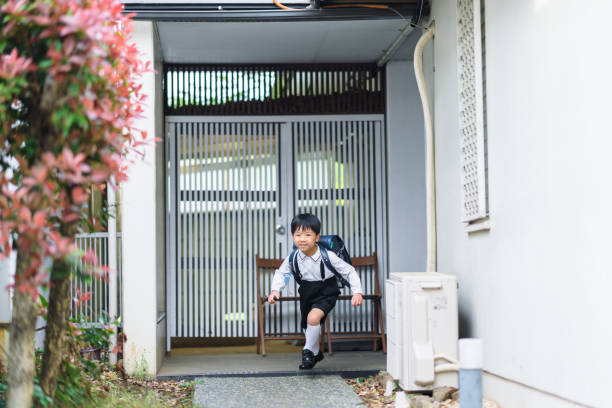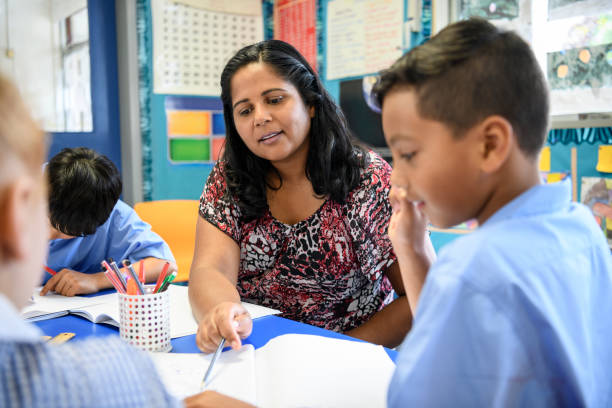International schools in Malaysia have gained popularity in recent years as parents seek to provide their children with a global education experience. Based on a report by the International Consultancy Group (ISC), the number of students enrolled into international schools has doubled from 45,000 in 2014 to over 90,000 in 2020. These schools offer a unique learning environment that often incorporates different curricula, a diverse student body and a focus on international perspectives.
However, some misconceptions about international schools persist, often leading to confusion and doubt among parents. Here are some of the most common misconceptions about international schools that you need to correct in order to get a clear and accurate picture of what international schools have to offer students. This will help you to exercise good judgement and make a sound/wise decision for your child’s education.

Credit image: iStock
International schools are only for expats
One of the most widespread misconceptions about international schools is that they are exclusively designed for expatriate families. While it’s true that many international schools are founded in areas with a high expatriate population, they are open to students of all nationalities. These schools aim to provide a global education and foster cultural diversity, making them accessible to local students as well.
International schools welcome students from various backgrounds, promoting an inclusive learning environment. This diversity benefits students by exposing them to different cultures, languages and perspectives to prepare them for an increasingly interconnected world.
In a release by The New Straits Times, more Malaysians are enrolling in international schools and this has led to an increase in their number from 66 schools in 2010 to 126 this year. Out of a total of 61,156 students, 39,161 are Malaysians and 21,995 foreigners.

Credit image: iStock
International schools are only for wealthy families
Another common misconception is that international schools are too expensive and are only accessible to wealthy families. While it is true that some international schools come with a high price tag, not all of them are unaffordable. Many international schools offer a range of affordable tuition fees and some even provide scholarships or financial aid to deserving students.
It’s important to research different international schools in your area to find one that you can afford. The cost alone should not deter you from considering these schools as they often provide high-quality education and various amenities that can enhance your child’s learning experience.

Credit image: iStock
International schools do not focus on the local culture and language
Another misconception is that international schools neglect the local culture and language of their host country. On the contrary, many international schools recognise the importance of preserving and celebrating the local culture and language alongside international perspectives.
International schools often integrate local requirements into their curriculum and offer language courses and cultural programmes that enable students to learn about and appreciate the culture of their host country. This dual approach helps students become culturally sensitive global citizens while maintaining a connection to their local community.

Credit image: iStock
International schools lack academic rigour
Some say that international schools prioritise a relaxed and easy-going approach to education, one which is not conducive to academic excellence. This perception couldn’t be further from the truth. International schools are known for their rigorous academic programmes that often surpass national standards.
Many international schools have high expectations for their students and maintain challenging curricula that prepare students for top universities worldwide. They also emphasise critical thinking, problem-solving and a strong work ethic, ensuring that students are well-prepared for future academic and professional challenges.

Credit image: iStock
International schools only follow the Western curricula
Some people believe that international schools only follow Western curricula, such as the International Baccalaureate (IB) or American curriculum. While many international schools do offer these programmes, they also provide a range of other curricula to cater to the diverse needs and preferences of their students such as the Islamic, Australian and Canadian curricula.
International schools often adopt a hybrid approach to education, integrating elements from various curricula to create a well-rounded academic programme. This approach allows students to gain a global perspective while maintaining flexibility in their educational choices.

Credit image: iStock
International schools are not suitable for students with special needs
Another common misconception is that international schools are not equipped to support students with special needs. Many international schools have special education programmes and trained staff to provide individualised support to students with diverse learning needs. They strive to create an inclusive environment where every student can thrive, regardless of their abilities or challenges.

Credit image: iStock
International schools are primarily for English speakers
While English is often the primary language of instruction in many international schools, these schools often offer multilingual programmes. Students have the opportunity to learn and practice various languages, including the language of the host country as well as other foreign languages. This emphasis on language diversity promotes communication skills and cultural understanding among students from different linguistic backgrounds.

Credit image: iStock
International schools prepare students only for universities overseas
It’s a misconception that international schools are solely focused on preparing students for universities overseas and that they sometimes neglect local educational requirements. In reality, many international schools provide a well-rounded education that includes preparation for both overseas and private university admissions locally. They often have dedicated counsellors and provide resources to assist students in navigating the application process for a wide range of institutions, including local private universities.

Credit image: iStock
International schools do not connect with the local community
While international schools may have a diverse international student body, they often actively engage with the local community. Many international schools participate in community service projects, collaborate with local organisations, and encourage students to get involved in local initiatives. These interactions help students develop a sense of social responsibility and a deeper connection to the host country.
International schools offer a unique and valuable educational experience for students from all walks of life. While misconceptions about these schools may persist, it’s important to base decisions on accurate information and a clear understanding of what international schools truly offer.
By debunking these common misconceptions, we hope to empower parents to make informed choices about their children’s education, with a view to fostering global citizens who are well-prepared for an interconnected world.
If you would like to know more about the international schools, do visit the Private and International School Fair happening this October and November.
Click here to know more!
Continue reading:
• International Schools in Kuala Lumpur


































